Each manageable object in the Codenica ITSM + ITAM system can be displayed in two different modes: item view and table view. Both views support the daily work of IT administrators, helpdesk teams, and staff responsible for IT asset inventory. To switch between views, simply click the corresponding button in the upper-right corner of the list (as shown in the screenshots below). The system automatically remembers your preferred view separately for each list.
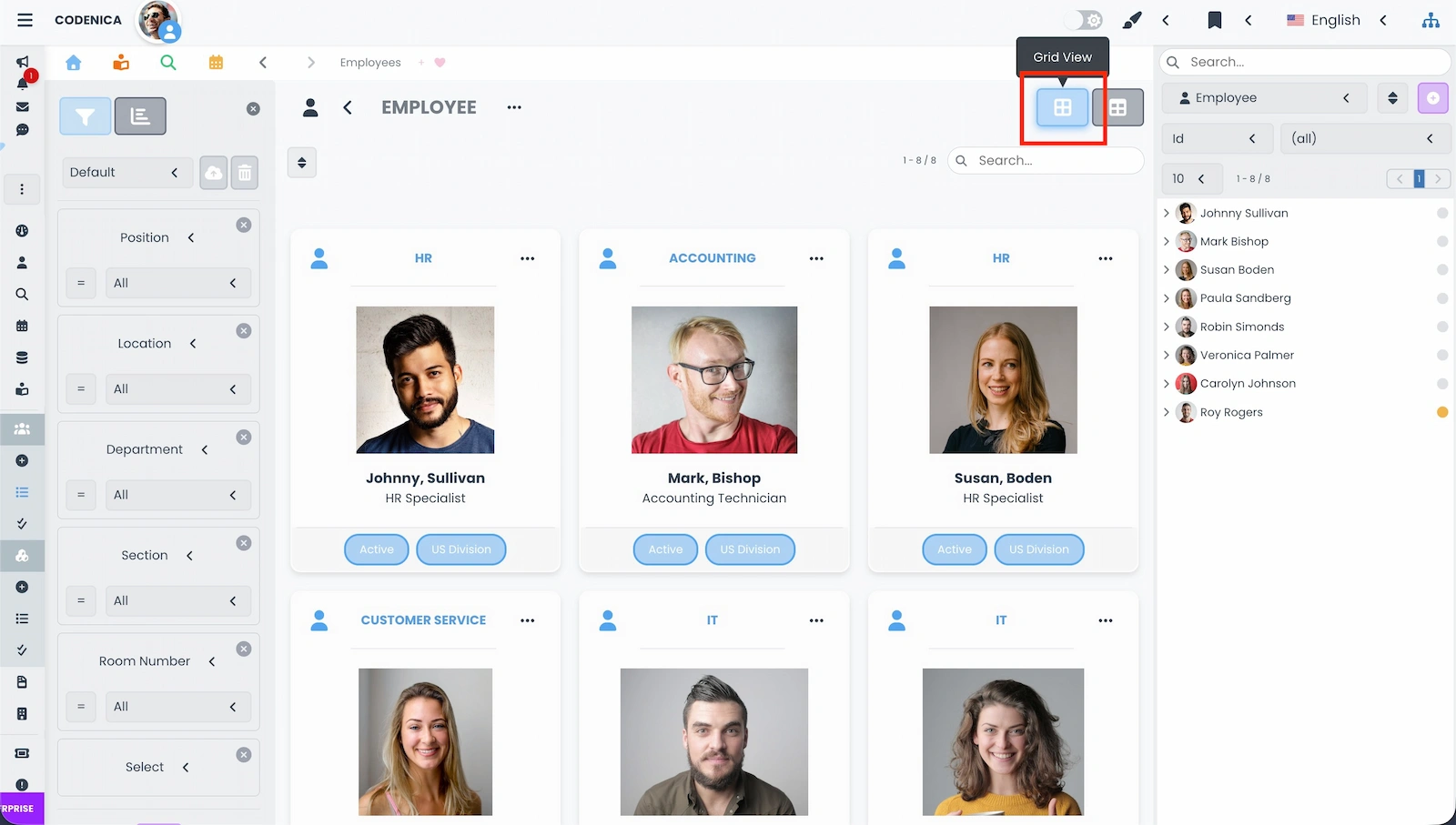
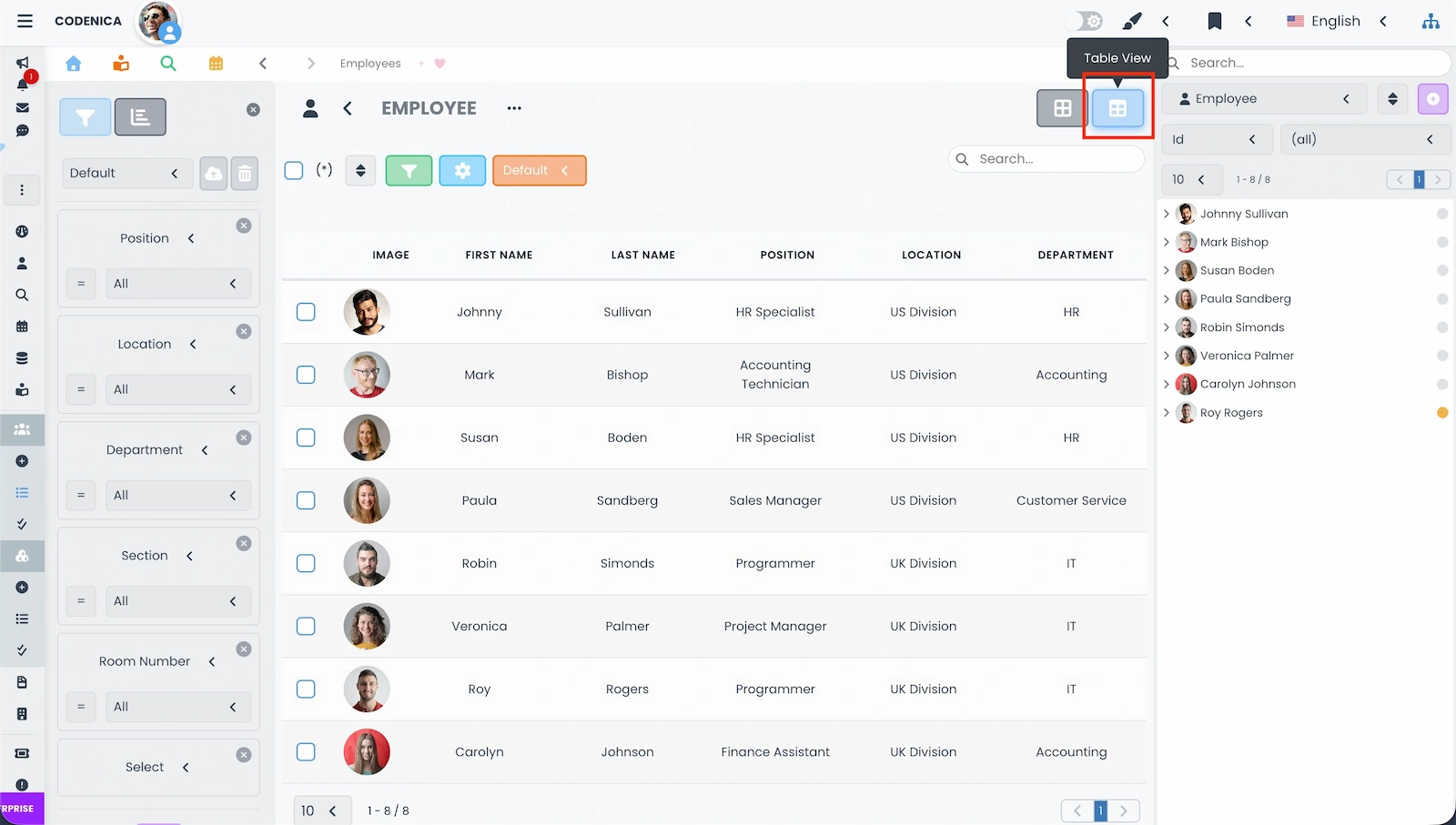
Object types supporting both views
The list of manageable objects that can be browsed in both item and table views covers the full range of system modules - from IT infrastructure inventory to ticket service operations. These include:
- IT Assets (computers, devices, software, licenses, etc.)
- Employees and clients
- Documents (invoices, warranties, contracts)
- Vendors and partners
- Tickets, changes, problems, and releases (service desk)
- Notes, tasks, and requests
- Approvals and confirmations
- Knowledge base articles
- Attached files and documentation
This broad support enables comprehensive IT infrastructure management and complete computer hardware inventory within a single, cohesive environment.

Sorting and data browsing
Both views support bi-directional sorting of items, allowing quick organization of data by name, category, date, or other attributes. This is particularly useful in large environments where the number of assets or tickets may reach hundreds or thousands of records.
Data export
Both the item and table views allow exporting data to popular file formats, including CSV, JSON, XML, and PDF. This makes it easy to share information with external systems, prepare reports, or archive selected records.
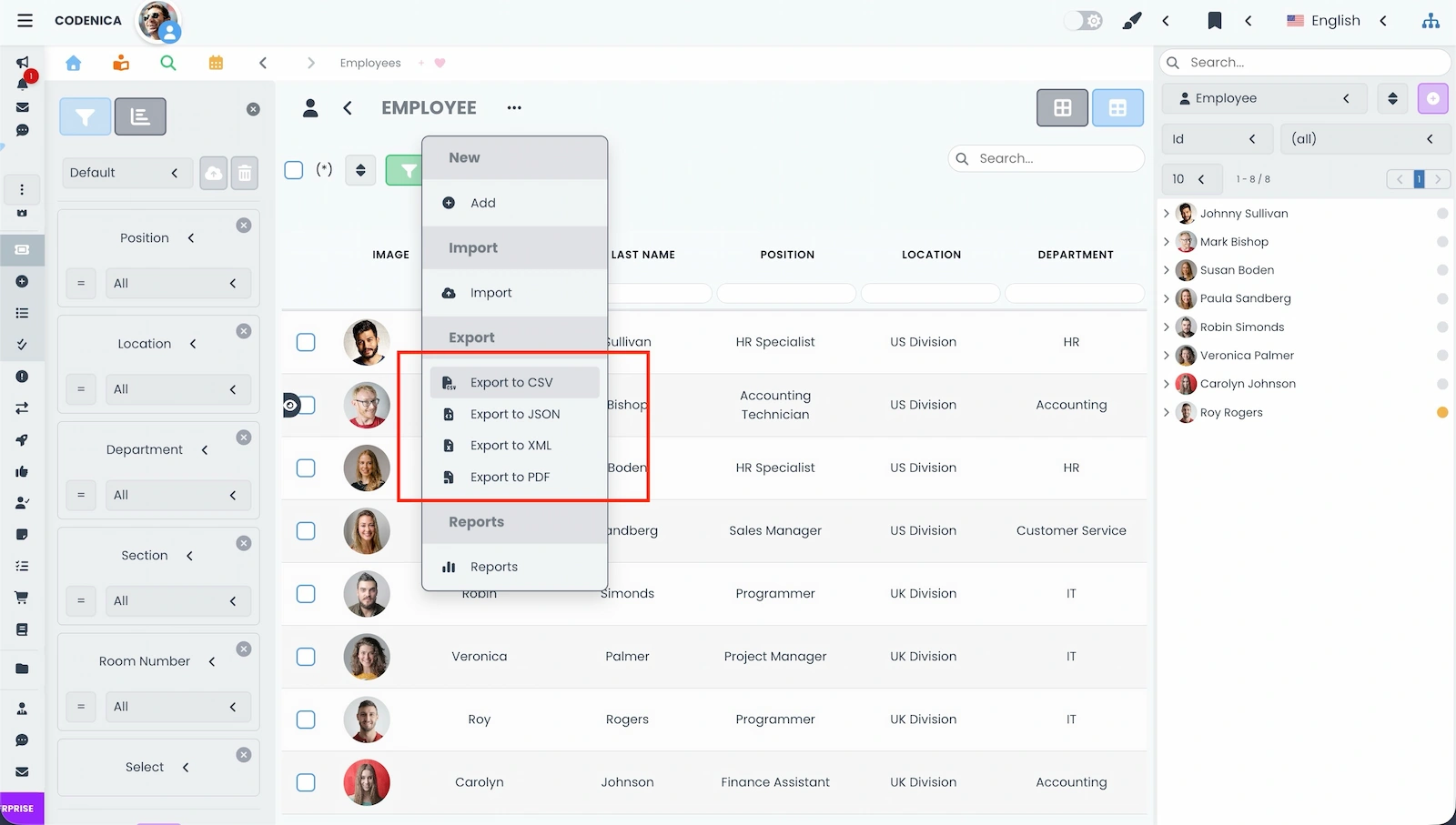
Selecting a view and working with data
Each view has its strengths that influence how you interact with assets or tickets. The item view allows quick recognition of objects thanks to its visual layout, while the table view gives you maximum control over data sets.
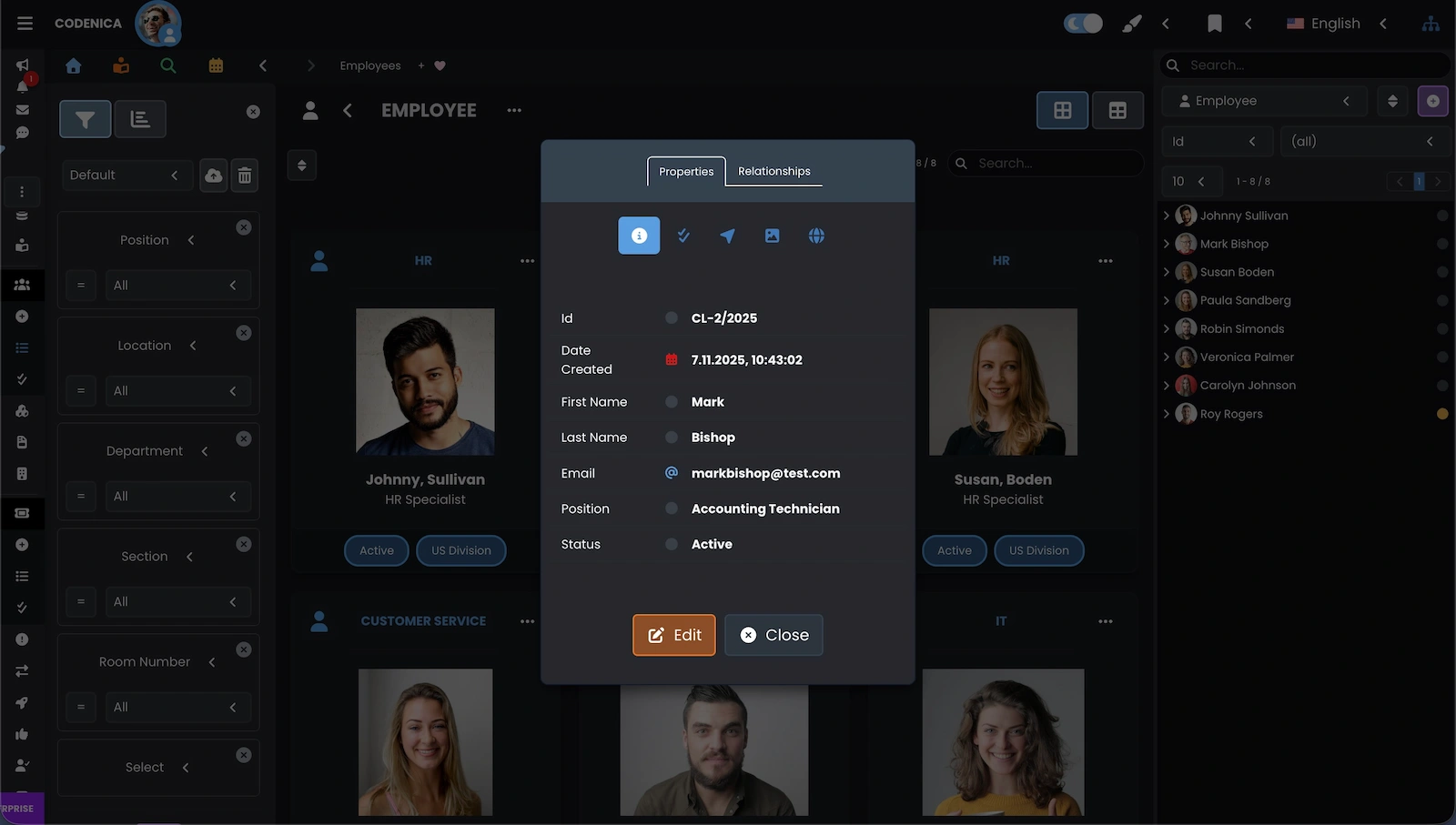
Item View - quick access to information
In the item view, simply click the object thumbnail (or default tile icon) to open its details. Alternatively, use the dropdown menu in the upper-right corner of the tile (three-dot icon) and select Info or Edit. This mode is perfect for daily IT asset management because it allows intuitive browsing of computers, licenses, or devices in a visual gallery format.
Table View - precise control and analysis
In the table view, you open the details of a given object by clicking its row in the table. This is especially useful for IT administrators and specialists managing large data sets, analyzing tickets, or performing inventory operations directly in spreadsheet-like mode.
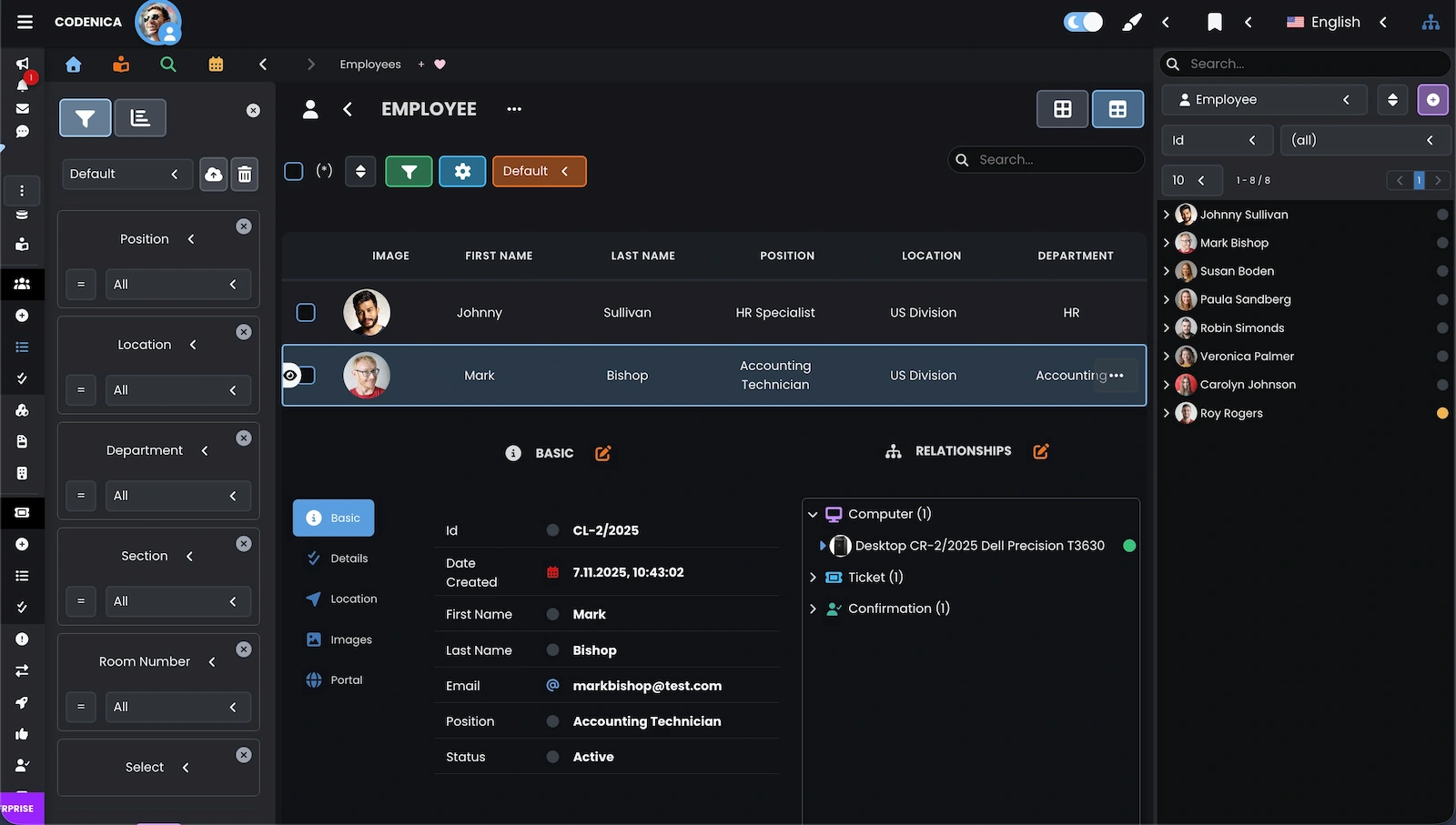
Advanced table view features
Some operations are available only in the table view, which extends the capabilities of asset management and ticket handling. It allows IT administrators and helpdesk teams to perform batch operations, filter data, and create their own saved table layouts.

The most important table view feature is bulk editing. Simply select more than one record, and options such as Edit or Delete appear above the table. This allows bulk updates of multiple assets or tickets at once, greatly accelerating IT inventory management and helpdesk operations.
Column filter - quick search and data analysis
The table view also includes an advanced column filter that narrows down results not only by text input but also using logical operators like >, <, or =. This is ideal for users who need to quickly locate specific records among thousands - for example, finding all devices purchased before a certain year or tickets open for more than 7 days.
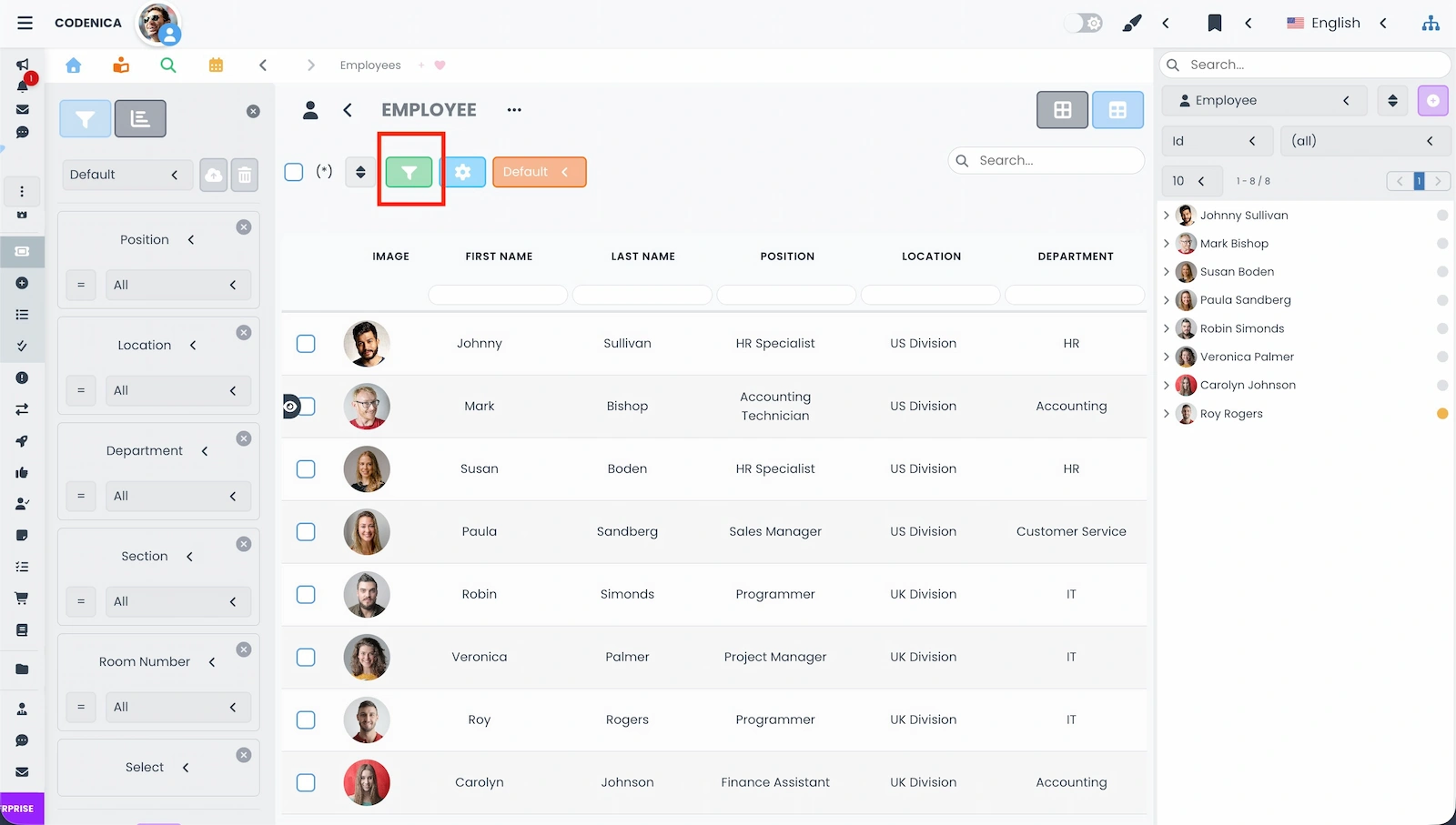
Creating custom views - personalized workflow
Users can also create their own table views and save them under individual names. You choose which columns are visible, their order, and screen space ratio. Layouts can be rearranged with drag & drop, and preferences are saved in the cloud - ensuring that no matter where you log in, your workspace always looks familiar. This is especially useful in service desk environments where each agent can define a personalized workspace.


Selecting a custom table view
Views for different modules and use cases
Item and table views are available in every module - from asset inventory and vendor management to helpdesk and service desk modules. This ensures that the entire IT infrastructure management process - from hardware inventory to ticket and change handling - remains consistent and transparent.
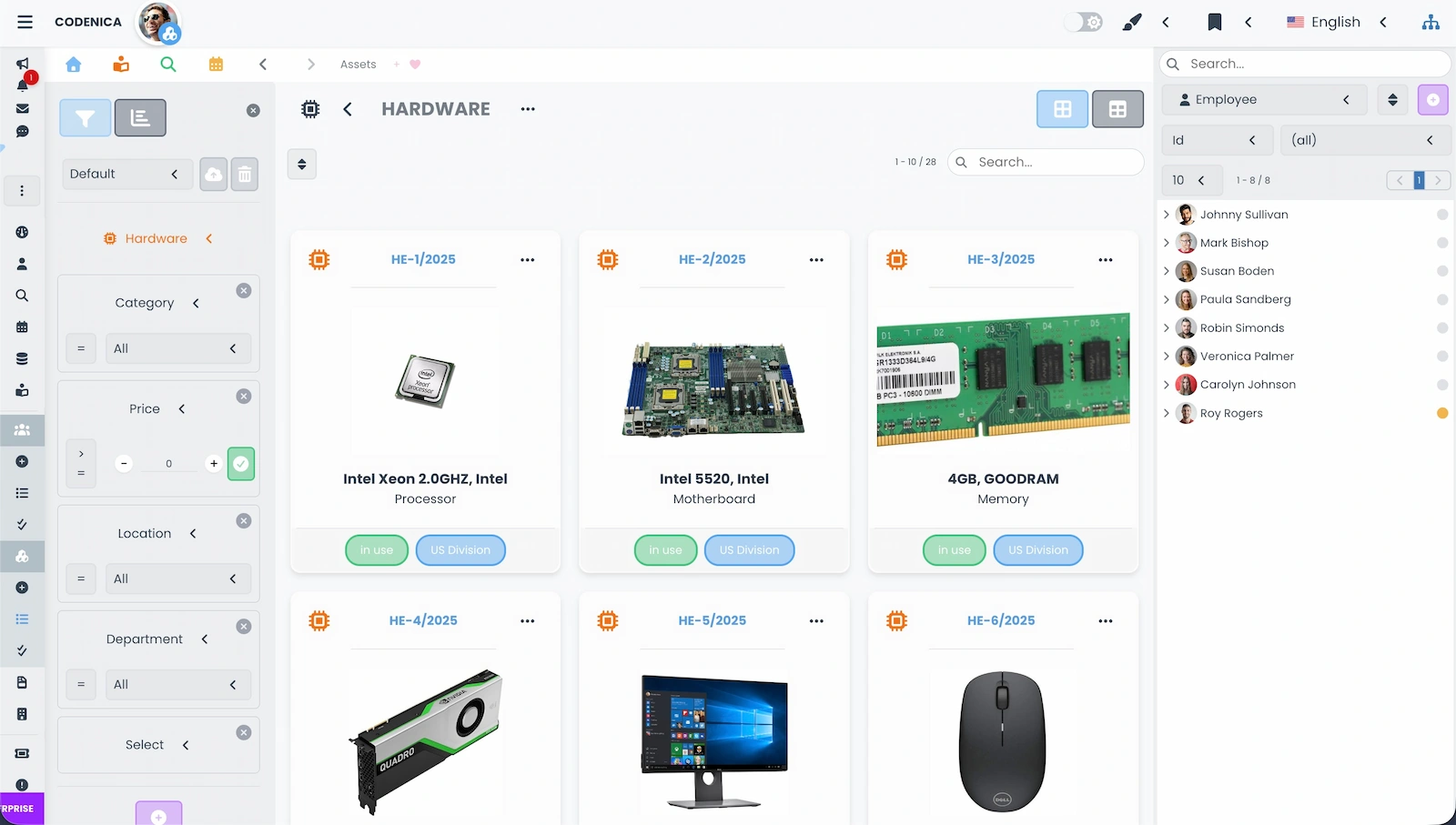
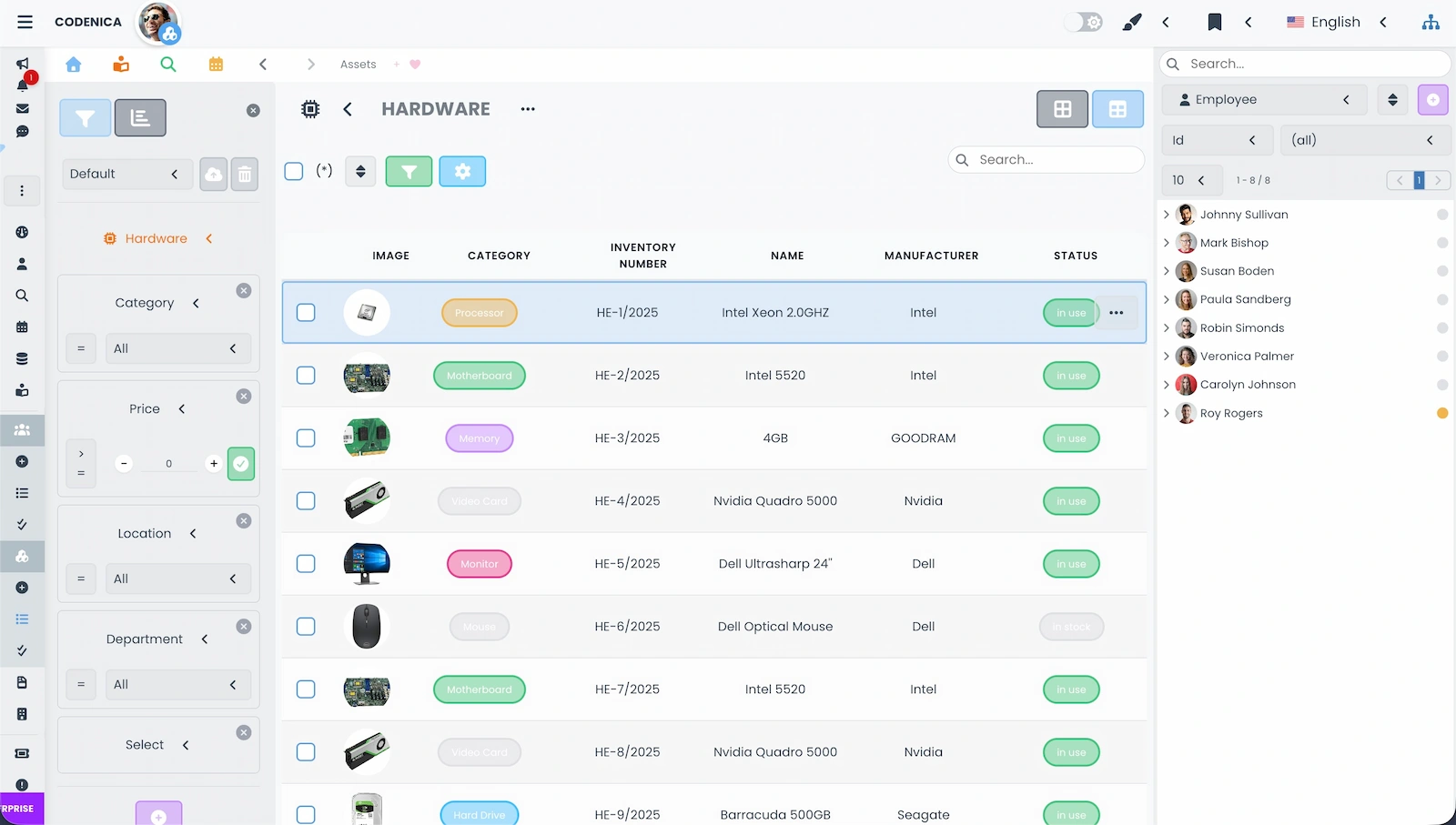

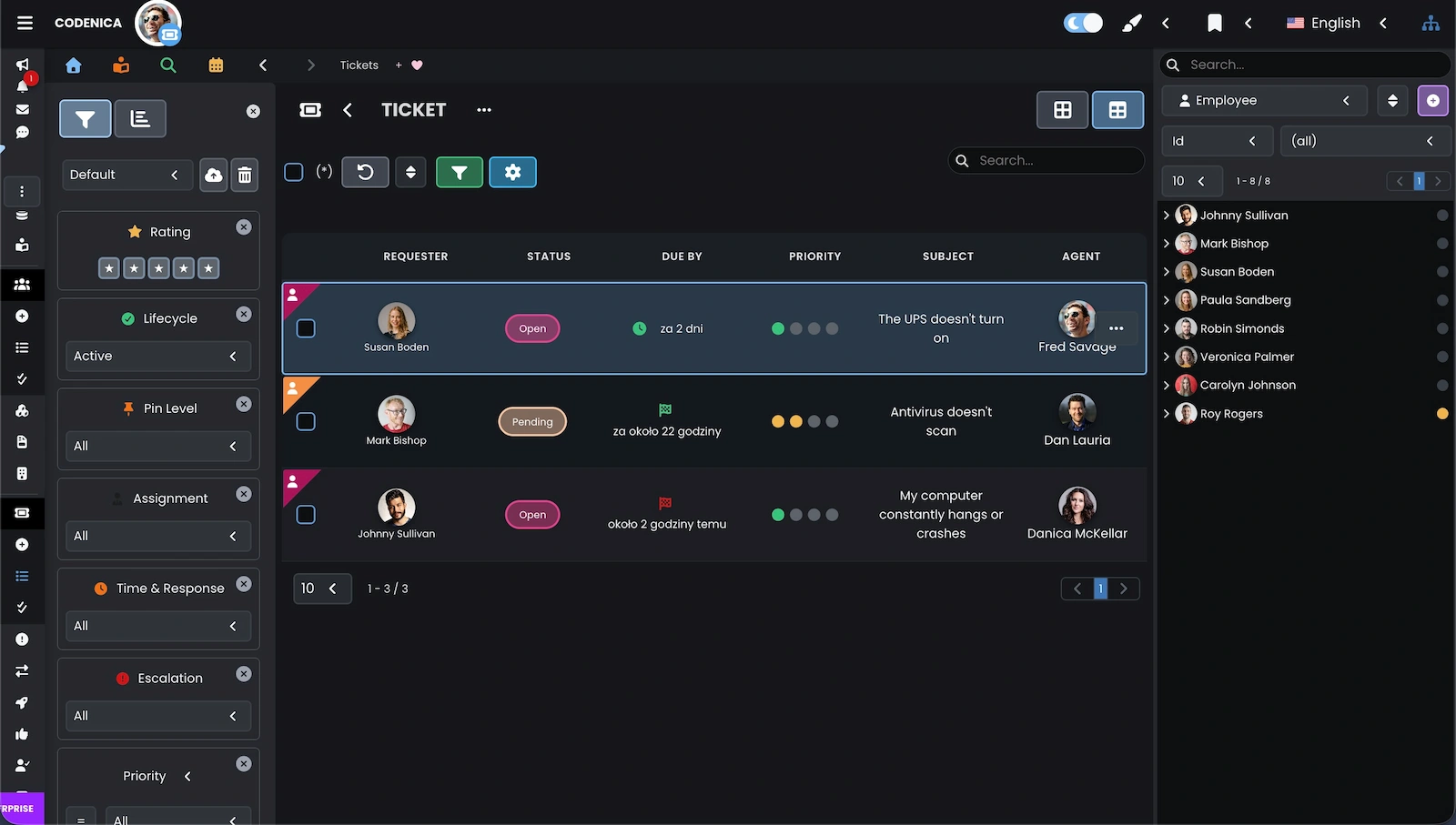
Summary
The flexible view system in Codenica allows each user to adjust the interface to their needs. Administrators, technicians, and IT managers can efficiently manage assets, perform IT hardware inventory, analyze data, and handle tickets within a single environment. This practical combination of helpdesk functionality and IT infrastructure management tools makes work simpler, more intuitive, and more productive.